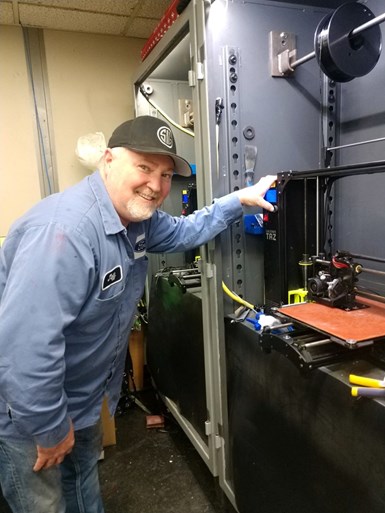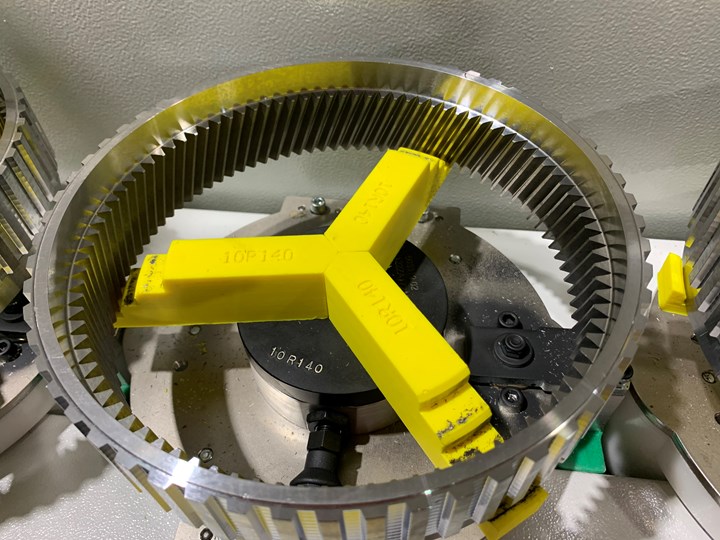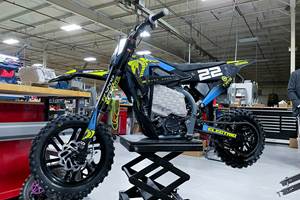Saving Time and Money on the Shop Floor with AM
Some of the most popular ways AM is presented miss some of the most practical and valuable ways AM can be used.
AM hardware and software providers tout the design (and material) freedom of AM. They do this so much that I believe most companies—and the engineers and designers working for them—think of AM as a design tool, not a manufacturing solution. In fact, look at the distribution channels for most AM hardware systems. They are CAD vendors and resellers who market to engineers and designers, not machining experts that cater to job shops or manufacturing and process engineers.
While I have touched on this in previous columns (see “Does Manufacturing Need Additive?” and “Is Additive Freeing Designers or Aiding Manufacturing?”), the point became painfully obvious to me a few months ago when I was preparing my talk for the 3D Printing Workshop for Job Shops at the International Manufacturing Technology Show (IMTS) in Chicago in September 2022. This new workshop was targeted specifically at manufacturing professionals and machining experts looking to find ways to improve operations on the shop floor rather than design the complex, organic-shaped, lightweight structures being heralded by others elsewhere in the AM exhibit hall.
A broaching operation for transmission ring gears at Ford was damaging the steel rings because of the specialized metal fixtures that were formerly used to hold the rings in place. 3D printing the fixtures out of PETG solved the problem, putting a $1 million problem to rest.
Photo Credit: Sharonville Transmission Plant
As I prepared my presentation for IMTS, I realized that none of the examples or case studies that I usually discuss were relevant to the anticipated audience. In fact, the whole point of using AM on the shop floor is different from those using it for product design and development. Granted, consolidating a multi-part assembly with AM may save some time and labor, but topology optimization, customization, conformal cooling, lattice structures, functionally graded materials, and the like have little to no meaning to manufacturing professionals and machining experts using 3D printing to support the work of a job shop. It is the engineers and designers that care about that stuff because it helps them meet product requirements in new and better ways.
The requirements that manufacturers need to meet are related to cost and lead-time, not lightweighting a component to improve fuel economy of a vehicle, for example. As a result, the uses and applications for AM are different on the shop floor than how AM is being sold to most industries.

Jeff Fisher, a millwright at the Sharonville Transmission Plant with over 23 years of experience at Ford, became a certified AM technician in 2019 and now operates the LulzBot 3D printers at the plant.
Photo Credit: Sharonville Transmission Plant
So how can AM help save cost and time on the shop floor? Examples abound; they just aren’t often showcased in stories about AM’s successes, and they certainly don’t go viral on social media. As a result, we miss out on the practical applications and uses of AM that can actually save time and money on the shop floor. For example, AM technology can be used to create any or all of the following, often at less time and cost:
- Jigs and fixtures
- Tooling and workholding
- Assembly/disassembly jigs
- Custom assembly tools
- Alignment tools and ergonomic grips
- Soft jaws and custom chucks
- Welding fixtures and bonding jigs
- Drill guides
- Go/No Go gauges
- Inspection fixtures
- Custom masking/marking/labeling tools
- Surrogate parts (for pre-production validation)
- Poka-yoke (to avoid operator errors and mistakes)
- Replacement parts (for older mills, lathes, and legacy manufacturing equipment)
As for quantifying the cost and time savings, three good examples I used in my talk are:
- Volvo Trucks used material extrusion AM technology to reduce turnaround time on tooling for their assembly lines by 94% (2 days versus 36 days); they also saved significantly on the cost of the tooling.
- Google Advanced Technology and Projects used vat photopolymerization AM technology to produce surrogate parts that reduced turnaround time by 85% and saved over $100,000 on an over-molded wearable device that was being produced.
- Dixon Valve used material extrusion AM to make custom grippers that saved 97% of the cost ($9.06 versus $290.35) while reducing turnaround time by 87%.
Finally, for those that want to learn more, Additive Manufacturing Media maintains a list of 10 examples of 3D printed tooling while AM hardware providers like FormLabs, Stratasys, and MarkForged along with AM service providers like Javelin, GSC, and PrintYourMind, provide examples that will inspire you to find creative ways to use AM to save time and money on your own shop floor.
Related Content
DMG MORI: Build Plate “Pucks” Cut Postprocessing Time by 80%
For spinal implants and other small 3D printed parts made through laser powder bed fusion, separate clampable units resting within the build plate provide for easy transfer to a CNC lathe.
Read MoreHow to Build 10,000+ Shot Molds in Hours
Rapid tooling isn’t so rapid when it takes days to 3D print a metal mold, and then you still must machine it to reach the necessary tolerances. With Nexa3D’s polymer process you can print a mold in hours that is prototype or production ready and can last for more than 10,000 shots.
Read MoreNew Electric Dirt Bike Is Designed for Molding, but Produced Through 3D Printing (Includes Video)
Cobra Moto’s new all-electric youth motocross bike could not wait for mold tooling. Parts have been designed so they can be molded eventually, but to get the bike to market, the production method now is additive manufacturing.
Read More10 Important Developments in Additive Manufacturing Seen at Formnext 2022 (Includes Video)
The leading trade show dedicated to the advance of industrial 3D printing returned to the scale and energy not seen since before the pandemic. More ceramics, fewer supports structures and finding opportunities in wavelengths — these are just some of the AM advances notable at the show this year.
Read MoreRead Next
At General Atomics, Do Unmanned Aerial Systems Reveal the Future of Aircraft Manufacturing?
The maker of the Predator and SkyGuardian remote aircraft can implement additive manufacturing more rapidly and widely than the makers of other types of planes. The role of 3D printing in current and future UAS components hints at how far AM can go to save cost and time in aircraft production and design.
Read MoreHybrid Additive Manufacturing Machine Tools Continue to Make Gains (Includes Video)
The hybrid machine tool is an idea that continues to advance. Two important developments of recent years expand the possibilities for this platform.
Read More3D Printing Brings Sustainability, Accessibility to Glass Manufacturing
Australian startup Maple Glass Printing has developed a process for extruding glass into artwork, lab implements and architectural elements. Along the way, the company has also found more efficient ways of recycling this material.
Read More






















